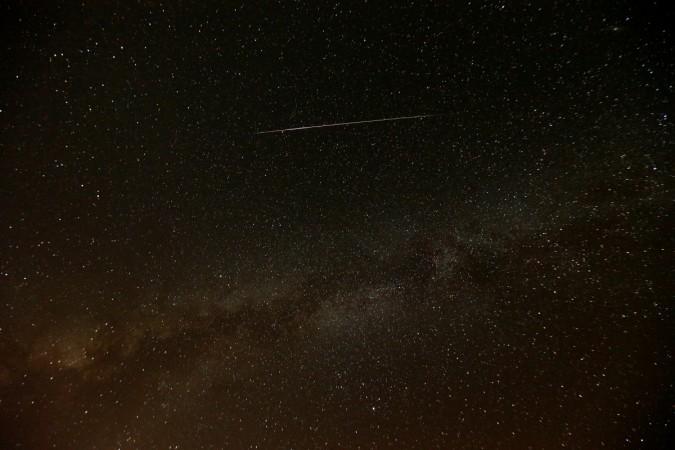
The Perseid meteor shower, which is one of the famous meteor showers, delivered a double dose of shooting stars in the early hours of Friday morning, which was caught on camera by thousands of stargazers and amateur photographers.
The Perseid meteor shower or shooting stars occur annually from mid-July to mid-August and the peak time is expected to be on Aug. 11 and 12. One can get the best of shooting stars or the bright streaks of light that shoot across the sky during mid-August.
This year, the celestial phenomenon is expected to be a big event, as NASA has predicted that there could be 160 to 200 meteors per hour.
"We're expecting 160 to 200 meteors per hour," Bill Cooke, head of NASA's Meteoroid Environment Office, said in a statement.
Stargazers from across the world posted photos and videos of Perseid meteor shower on Twitter and Facebook, showing the spectacular cosmic light show with shooting stars.
The Perseid showers occur when Earth passes through a cloud of the comet's debris, NASA explained. The Perseid's are linked with comet Swift-Tuttle, which orbits the sun every 133 years.
"The Perseid's have been observed for at least 2,000 years and are associated with the comet Swift-Tuttle, which orbits the sun once every 133 years. Each year in August, the Earth passes through a cloud of the comet's debris. These bits of ice and dust - most over 1,000 years old - burn up in the Earth's atmosphere to create one of the best meteor showers of the year," NASA explained.
"The Perseid's can be seen all over the sky, but the best viewing opportunities will be across the northern hemisphere. Those with sharp eyes will see that the meteors radiate from the direction of the constellation Perseus."
For those who were unable to watch the annual Perseid meteor shower due to bad weather, here are some stunning photos and videos that captured the shooting stars from across the world:










!['You will be okay..': Hina Khan gets teary-eyed as Salman Khan gives her strength to fight cancer [Watch]](https://data1.ibtimes.co.in/en/full/806680/you-will-be-okay-hina-khan-gets-teary-eyed-salman-khan-gives-her-strength-fight-cancer.jpg?w=220&h=138)



